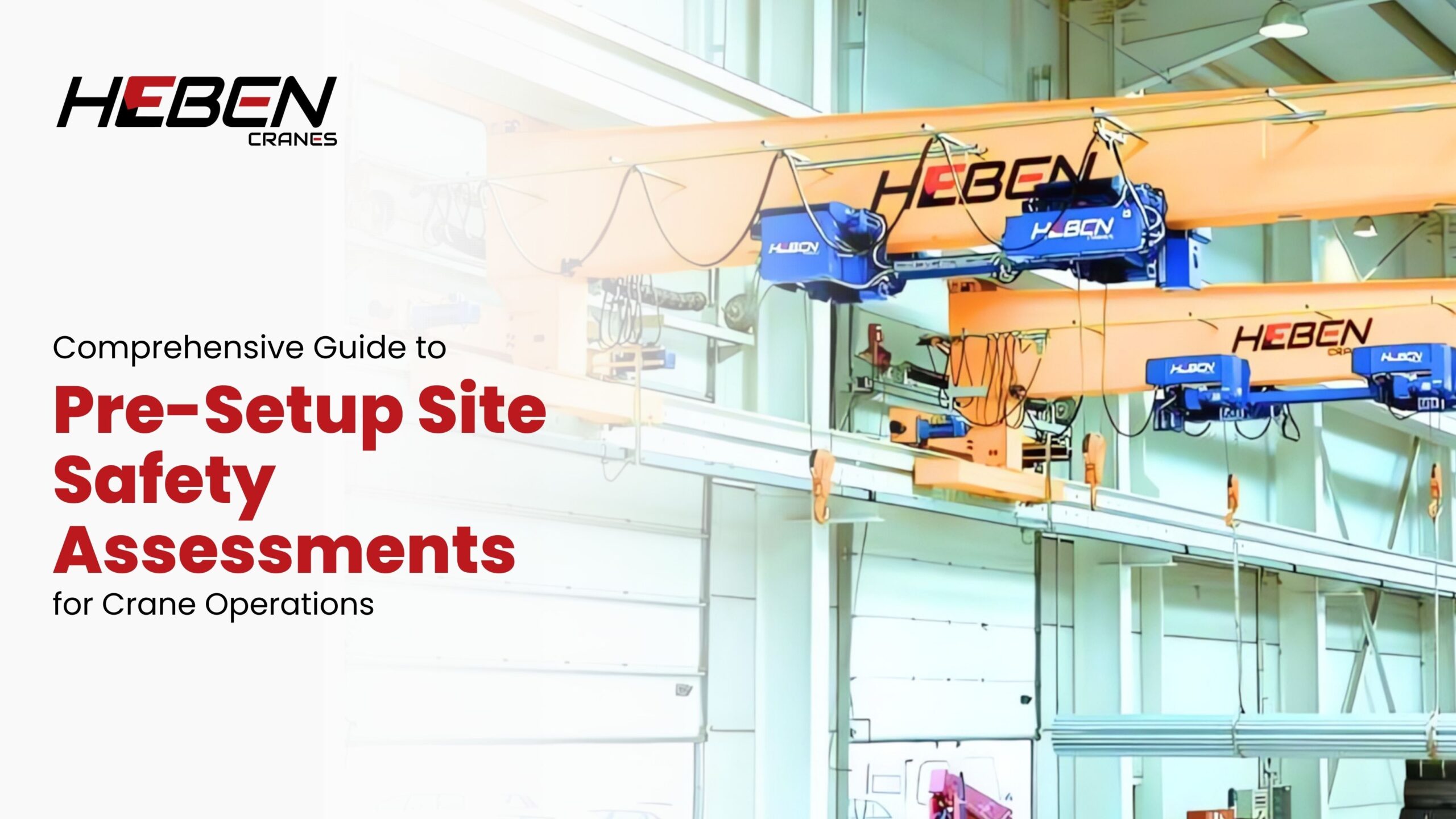Cranes are among the major engineering marvels that support both construction and industrial operations. Because of the complexity involved, there is a high risk from such heavy machinery. A pre-setup site safety assessment for a crane is not only a regulatory requirement but also a crucial step in ensuring the safety and success of the personnel involved in the operation. This paper looks at key aspects of a site safety assessment, focusing on preparation, risk management, and communication.
Understanding Crane Operations
These include mobile cranes, tower cranes, and overhead cranes that serve specific purposes in lifting and moving heavy loads. Such understanding is elemental to personnel concerned with crane operations. For instance, a mobile crane is versatile, and easy to move from site to site, while tower cranes are fixed and offer height advantages for big construction projects.
Despite their utility, cranes pose several hazards. According to a study by the Konecranes Training Institute, 37% of crane-related incidents involve being crushed by loads, often due to load swings or drops caused by unstable rigging practices. Additionally, 27% of incidents result from dropped loads, which can occur if proper safety measures are not followed during setup and operation. These statistics highlight the critical need for comprehensive safety assessments before any crane operation begins.
Pre-Assessment Steps
Site Survey
The first step in any site safety assessment is conducting a thorough site survey. This involves identifying potential obstacles such as power lines, buildings, trees, or other structures that may interfere with crane operations. As noted in a guide on safe staging practices for mobile cranes, “Always begin with a thorough site assessment. Look for potential hazards like soft ground, slopes, or obstacles.”
During this survey, it’s essential to assess ground conditions. The stability of the ground where the crane will be set up can significantly affect safety. Soft or uneven surfaces can lead to tipping or instability during lifts. If necessary, use leveling devices and mats to stabilize the crane.
Environmental Considerations
Environmental factors also play a crucial role in crane safety. Weather conditions such as wind speed and visibility must be considered before proceeding with operations. High winds can affect load stability and increase the risk of accidents. According to industry best practices, “Adapting your safety protocols to account for these environmental factors is important in maintaining a secure work site.”
Additionally, understanding site-specific hazards—like nearby structures or utilities—is vital for ensuring safe crane operations.
Risk Assessment Process
Identifying Potential Risks
Once the site survey is complete, the next step is to identify potential risks associated with the crane setup. This includes evaluating not only environmental hazards but also operational risks such as equipment failure or human error. A systematic risk assessment should consider all possible scenarios that could lead to accidents.
Developing a Risk Mitigation Plan
After identifying risks, it’s essential to develop a risk mitigation plan tailored to the specific conditions of the site and the type of crane being used. This plan should outline safety measures to address identified risks effectively. For example, if there are overhead power lines nearby, establishing safe distances and using signal persons can help prevent accidents.
Crane Setup Guidelines
Selecting the Right Location
Choosing an optimal location for crane setup is critical for ensuring safe operations. The crane should be positioned on firm, level ground to minimize risks associated with tipping or instability during lifts. Conduct a thorough site survey to identify potential obstacles such as power lines, buildings, or trees.
Using outriggers is also essential for stabilizing mobile cranes. Outriggers should be fully extended and placed on stable ground or pads to distribute the crane’s weight evenly.
Stabilization Techniques
Proper stabilization techniques are crucial for preventing accidents during crane operations. Operators should ensure that outriggers are not placed over voids or depressions that could compromise stability. The use of pads can help distribute weight more evenly and enhance stability.
Communication and Coordination
Team Coordination
Effective communication among team members is vital for safe crane operations. All personnel involved in the lift should understand their roles and responsibilities clearly. Utilizing hand signals and radios can facilitate coordination during lifts and ensure everyone is aware of ongoing operations.
As emphasized in various safety guidelines, “Clear and consistent communication is vital.” This includes briefing all team members on the lift plan before commencing work.
Emergency Preparedness
Establishing emergency protocols is another critical aspect of communication and coordination. All team members should be familiar with emergency procedures in case something goes wrong during operations. Regular drills can help ensure that everyone knows how to respond effectively in an emergency situation.
Technology in Safety Assessments
Utilizing Advanced Tools
Incorporating technology into safety assessments can significantly enhance crane operation safety. Tools such as load moment indicators help monitor load stability during lifts, while anti-collision systems prevent accidents involving nearby structures or equipment.
The National Safety Council highlights that “the crane industry can be dangerous,” emphasizing that technology combined with training can make a significant difference in preventing injuries before they occur.
Integrating Technology with Human Oversight
While technology plays a crucial role in enhancing safety, it should complement human vigilance rather than replace it. Operators must remain attentive to their surroundings and communicate effectively with team members throughout the operation.
Conclusion
In conclusion, conducting a thorough site safety assessment before crane setup is essential for ensuring safe operations and protecting personnel from potential hazards. By understanding crane operations, performing detailed pre-assessments, identifying risks, selecting optimal locations for setup, coordinating effectively within teams, and utilizing advanced technology, we can significantly reduce the likelihood of accidents.
As we continue to evolve our understanding of crane safety practices, it’s crucial for passionate amateurs and professionals alike to commit to ongoing education in this field. Safety should always be our top priority—after all, every successful lift begins with careful planning and preparation!




